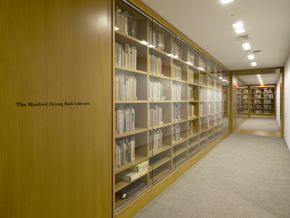Manfred Heiting Book Collection
The Anne Wilkes Tucker Photography Study Center provides storage, display, and access to exceptional holdings of photographically illustrated books acquired in 2012 from collector Manfred Heiting, whose photography collection the Museum acquired in 2002 and 2004 in a transformative enrichment of the MFAH collection. The nearly 7,500 volumes in the Manfred Heiting Book Collection complement the Museum’s photography holdings, allowing researchers to examine, side-by-side, exhibition prints by noted photographers and the reproductions in book form, which was often the artists’ desired end goal and the means by which their work was widely disseminated and gained notoriety. Among the treasures of the book collection are John Thomson’s Foochow and the River Min (1873); Laure Albin-Guillot’s Micrographie décorative (1931); Ansel Adams’s Sierra Nevada (1938); Soviet-era Russian photo-books, noted for their Modernist design and typography was well as their innovative photographs, including El Lissitzky’s Industriya Sotzializma (Industry of Socialism) (1935); postwar Japanese books and periodicals including Provoke (1968–70), Kikuji Kawada’s The Map (1965), and books featuring the work of Daido Moriyama, Shomei Tomatsu, Domon Ken, and Eikoh Hosoe.
Photography Study Center visitors can also consult rare books from the photography collection and the Museum’s Hirsch Library, including two recently acquired landmarks in publishing: William Henry Fox Talbot’s The Pencil of Nature (1844–46), the first commercially published book illustrated with photographs; and a complete set of Camera Work (1903–17), Alfred Stieglitz’s sumptuously produced journal with fine photogravures by Gertrude Käsebier, Edward Steichen, Paul Strand, Clarence White, and other early-20th-century photographers.

